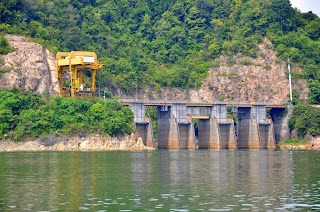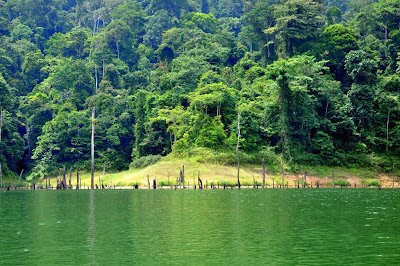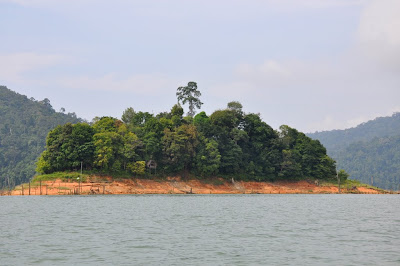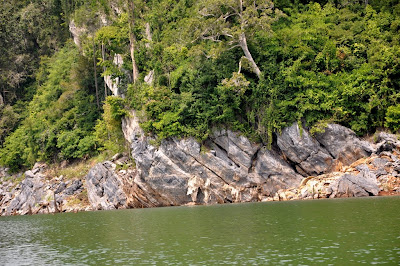 |
| A view from the balcony - the bridge to Banding Island |
 |
| Banding Lake Side Inn |
Alt
hough the drive from Kuala Lumpur to Pulau Banding is estimated to take 5 ½ hours, it can actually drag longer depending on the traffic. This is Eid and even the expressway can get congested. From the North-South Expressway we exited Kuala Kangsar and drove further up the East-West Highway. The next 39km after the town of Gerik is very winding with sharp bends all over.
We booked a hotel on a hilly spot just before the bridge across Pulau Banding – Banding Lake Side Inn. Across the bridge is the Belum Rainforest Resort which is much more expensive but with better facilities. Apart from these two hotels, there are no other hotels in the vicinity except for few boat houses on the lake, which is much cheaper than the hotels ranging $12 to $30 USD but I’m not sure about the quality of the boat houses though. I think one should not expect much out of these boat houses but perhaps more for the experience of staying in it.
 |
| King Size Bed |
Banding Lake Side Inn is a simple hotel with all the basic features; mini bar, sofa, ironing board and the normal furniture a hotel would have. We had a deluxe room – clean and spacious. But what bothers me most about this hotel is the poor service. We arrived quite late after a long drive and were surprise that there was no one to take our stacks of luggage to the rooms. We loaded our things on the hotel trolley and started distributing them to our respective rooms. I’m not sure if that is the normal practice in this hotel or is it just they are terribly under staff during Eid. “Crappy!” I whispered to myself.
The breakfast was even more disappointing with just bread, butter and jam. If you’re going for jungle trekking, water rafting and other activities you probably need to load yourself a little bit more to boost your energy. Luckily we brought our own fruits, nuts, biscuits and cereals. Except for a small petty shop and a local stall near the second bridge, this place has no grocery store or fast food restaurant. The hotel has a small shop selling ice cream and junk food but it is very expensive. The nearest town is Gerik, 39km away. Those are some of the setback of Banding Lake Side Inn.
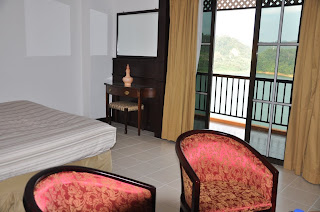 |
| The balcony facing the lake |
But on a positive note, as soon as I got into my room (401), all my complaints vanished. I was mesmerized by the breathtaking view from my balcony, facing the jade green lake set against Banding Island and the other small Islands. I wake up in the morning watching the sunrise over the shimmering lake. Other families of mine on the second and third floor complained of the bad smell from the toilet, the small insects raided their room but I’m utterly contented with the magnificent view. Couldn't ask for more!
 |
| Huge bathroom |
 |
| Banding Island at sunset from the balcony |
 |
| Green tropical rainforest |
























